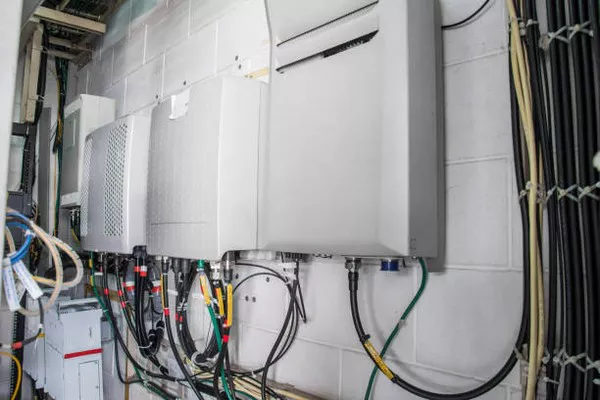Generators have become essential tools for many households and businesses, providing backup power during outages and enabling off-grid living. Understanding the capabilities of a generator, especially one with a 5500 watt capacity, is crucial for effectively meeting your power needs. This article explores what appliances and devices a 5500 watt generator can run, the factors influencing its output, and practical tips for usage.
Understanding Generator Wattage
Before delving into specific applications, it’s important to understand how wattage works. Generators produce two types of wattage:
Running Wattage: This is the continuous power needed to keep appliances running.
Surge Wattage: This is the extra power required to start appliances with motors, such as refrigerators and air conditioners.
A 5500 watt generator typically provides around 4,500 running watts and can handle surge loads of up to 5,500 watts. Knowing these distinctions helps in making informed decisions about what you can run.
Common Appliances and Their Power Requirements
To determine what a 5500 watt generator can run, we must consider the power requirements of various household appliances. Below is a list of common items and their approximate wattage:
1. Refrigerator
Running Wattage: 200-800 watts
Surge Wattage: 1,000-2,000 watts
A refrigerator typically requires a significant amount of power to start but less to run continuously. A 5500 watt generator can easily handle most refrigerators.
2. Freezer
Running Wattage: 200-600 watts
Surge Wattage: 1,000-1,500 watts
Similar to refrigerators, freezers can run on a 5500 watt generator without issue.
3. Lights
LED Bulb: 10-20 watts each
Incandescent Bulb: 60-100 watts each
Depending on the type and number of bulbs, you can power numerous lights with a 5500 watt generator.
4. Television
Running Wattage: 50-400 watts
Televisions, depending on their size and technology (LED, OLED, etc.), can vary significantly in wattage. A 5500 watt generator can power multiple TVs.
5. Microwave Oven
Running Wattage: 600-1,200 watts
Surge Wattage: 1,800-2,200 watts
You can run a microwave for cooking, but be mindful of its surge requirements.
6. Washing Machine
Running Wattage: 400-1,200 watts
Surge Wattage: 1,200-2,000 watts
A washing machine can also run on a 5500 watt generator, but check the specific model for accurate power ratings.
7. Air Conditioner
Running Wattage: 1,500-2,500 watts
Surge Wattage: 2,000-3,000 watts
Most small to medium-sized air conditioning units can be powered, though larger units might exceed the generator’s capacity.
8. Space Heater
Running Wattage: 750-1,500 watts
A space heater can typically be run, but consider how it fits into the overall wattage capacity.
9. Power Tools
Running Wattage: 500-1,800 watts
Various power tools such as saws, drills, and compressors can be powered, making this generator ideal for construction or landscaping tasks.
Calculating Total Load
When determining what you can run on a 5500 watt generator, it’s vital to sum up the wattage of all devices you intend to use simultaneously. Ensure that the total does not exceed 4,500 running watts to avoid overloading the generator.
Example Calculation
Refrigerator: 600 watts
Microwave: 1,000 watts
Lights (10 LEDs at 15 watts each): 150 watts
Television: 200 watts
Total Load: 600 + 1,000 + 150 + 200 = 1,950 watts
In this scenario, a 5500 watt generator can handle the load comfortably, leaving additional capacity for other devices.
Factors Affecting Performance
Several factors can affect how long and efficiently a 5500 watt generator runs:
Fuel Type: Generators may run on gasoline, propane, or diesel. Fuel type affects efficiency and runtime.
Load Management: Balancing the load by staggering the use of high-wattage appliances can prevent overload.
Maintenance: Regular maintenance ensures optimal performance. Clean air filters, change oil, and check spark plugs periodically.
Altitude and Temperature: High altitudes and extreme temperatures can affect generator output and efficiency. Adjust expectations based on environmental conditions.
Runtime Estimates
The runtime of a generator largely depends on the fuel tank size and the load being used. Here’s a rough estimate for a 5500 watt generator running at 50% load:
Fuel Capacity: 5 gallons of gasoline
Estimated Runtime: 10-12 hours at half load
This means if you run appliances that total around 2,250 watts, you can expect the generator to operate efficiently for 10 to 12 hours before needing a refill.
Practical Tips for Using a 5500 Watt Generator
Understand Your Needs: Prioritize which devices are essential during a power outage or job site.
Invest in a Power Meter: This tool can help measure the wattage of your appliances, ensuring you stay within limits.
Use Extension Cords Wisely: Choose heavy-duty cords to minimize voltage drop and potential overheating.
Avoid Overloading: Always keep an eye on your total load and avoid plugging in too many high-wattage devices simultaneously.
Conclusion
A 5500 watt generator is a versatile tool capable of running various household appliances and power tools. By understanding your power needs and managing loads effectively, you can maximize the generator’s potential. Whether for emergency backup or outdoor activities, knowing what a 5500 watt generator can run empowers you to make the best choices for your power requirements.
With this knowledge, you’ll be well-equipped to harness the full potential of your generator, ensuring reliability when you need it most.
Related topics:

